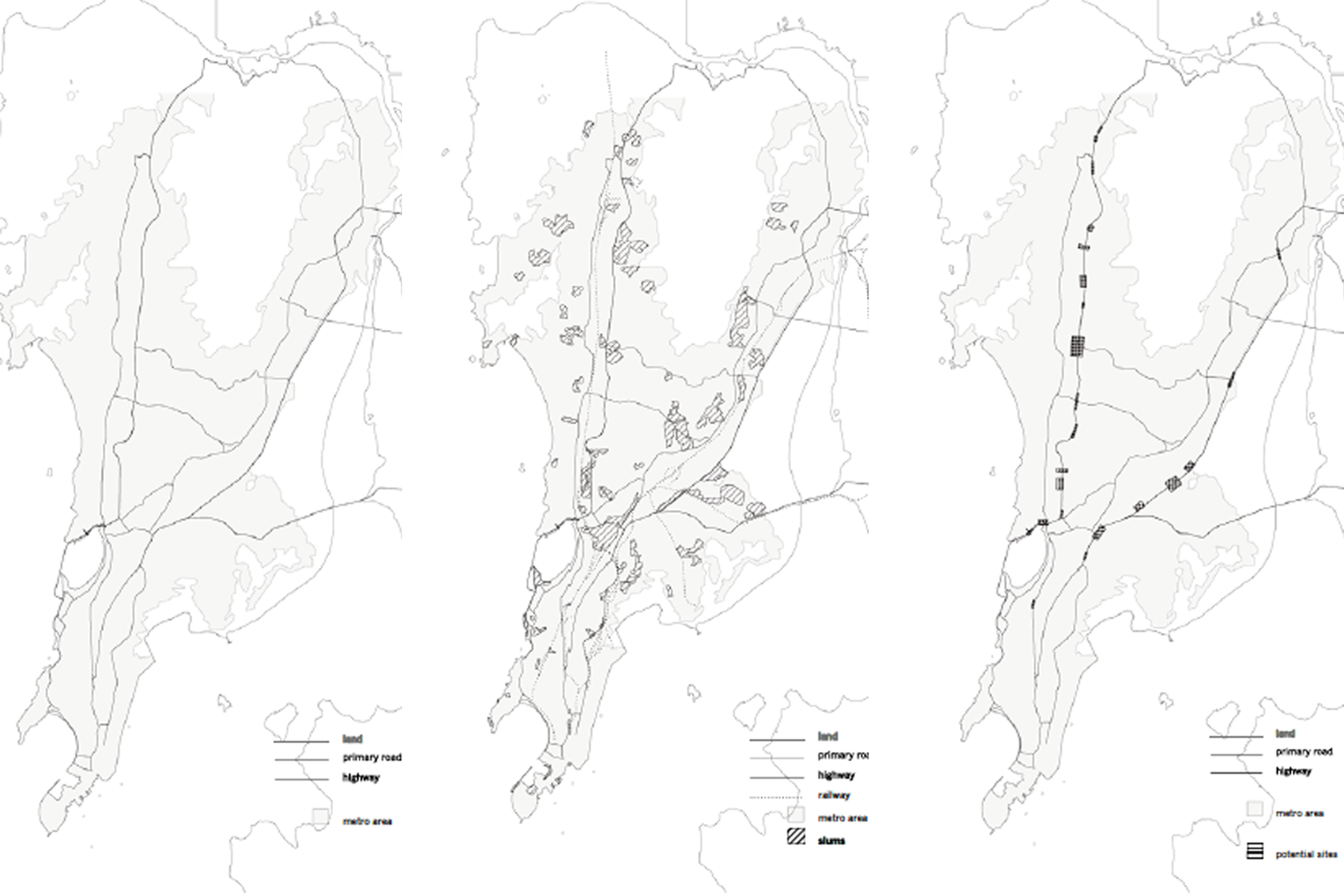



Claiming Space: Occupying the Expressway
Undergraduate Studio Project at the University of MichiganInstructor: Nahyun Hwang
Linear infrastructure paradoxically connects and divides within a single city. In Mumbai, the expressways that tie the suburbs to the city allowed for outward growth and rapid population increase. Populations of those able to afford formal housing have increased as well as those dependent on improvised dwellings.
The resulting villages often have bustling micro-economies, as in the case of Dharavi or Golibar. Where these are intersected by the highway, portions of the villages are severed from the local economy, which relies on spatial proximity and pedestrian access. Similarly, the market is reliant upon a horizontal housing typology of just two or three stories, in which artisans sleep above their shops and sell goods directly to passerby at the ground level. This eliminates the need for a prohibitively expensive commute and allows merchants and manufacturers to take advantage of the open areas and interstitial spaces to increase production. Slum rehabilitation authorities espouse the benefits of low-cost, high-rise housing that subverts this typology in the name of 'urban renewal.'
This project seeks to utilize the underside of the interstate where it divides a segment of Golibar, to provide access across the divide and maintain necessary elements of the existing typology dismissed in the high-rise housing scheme.

